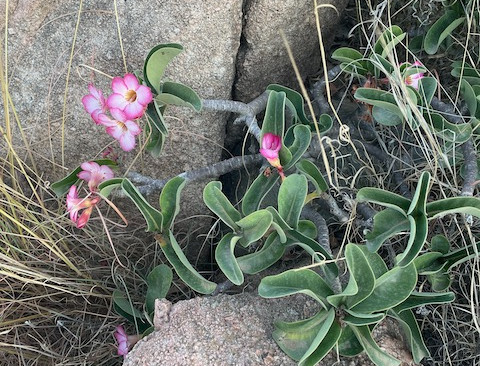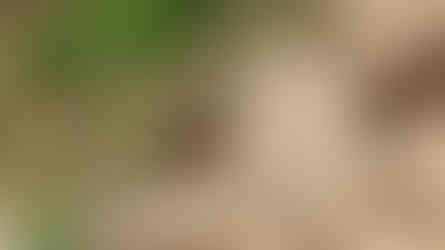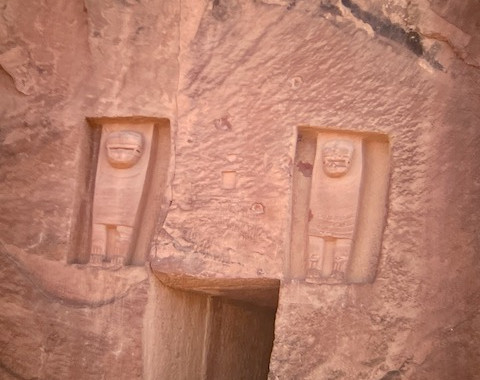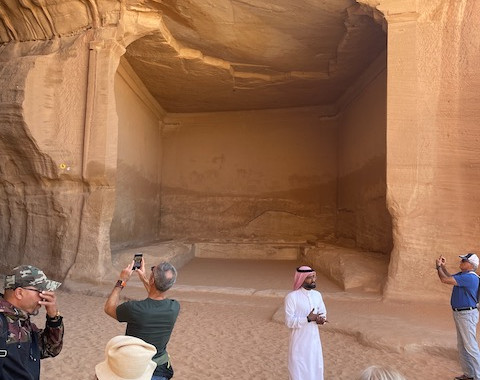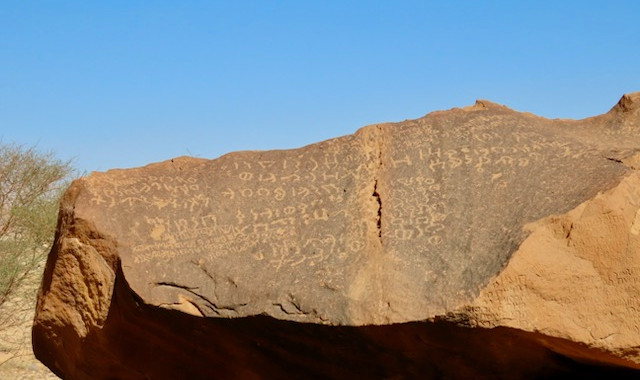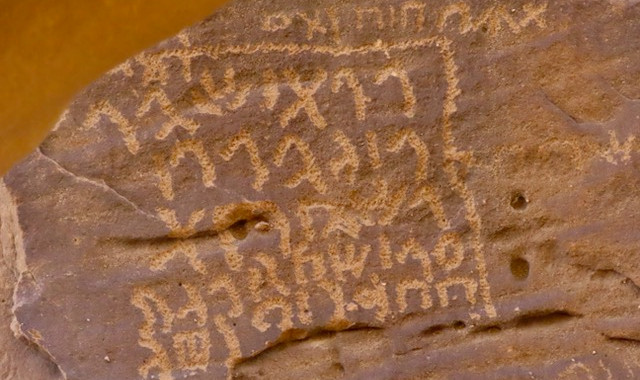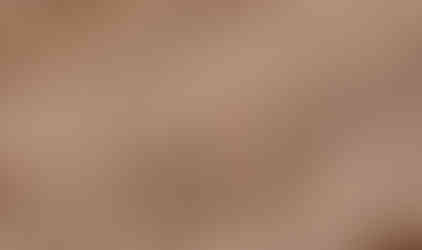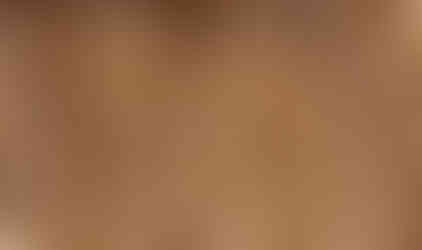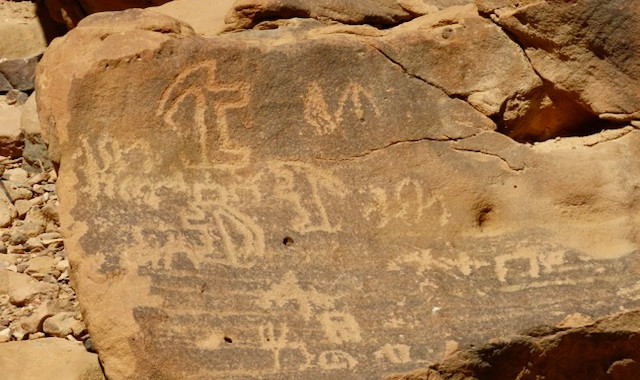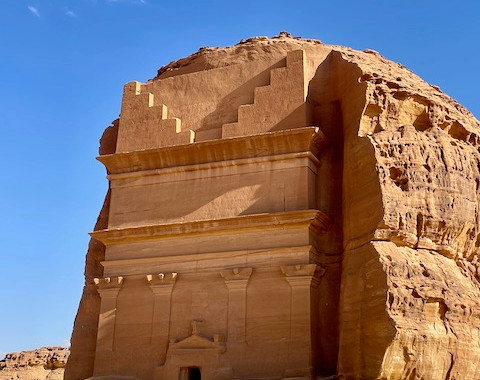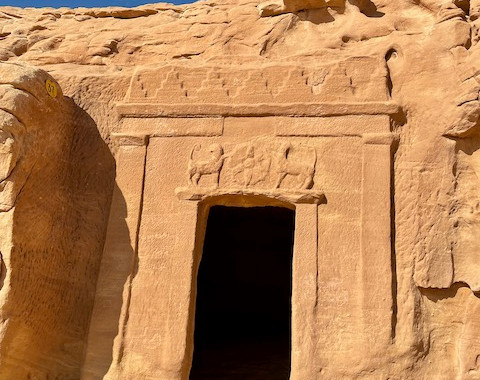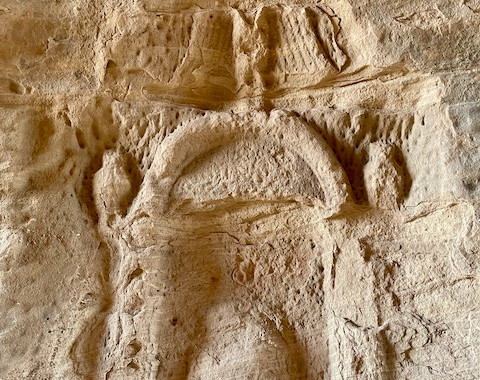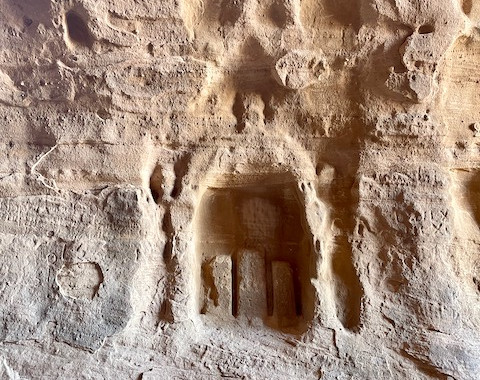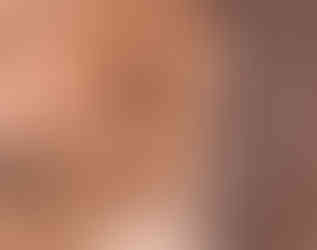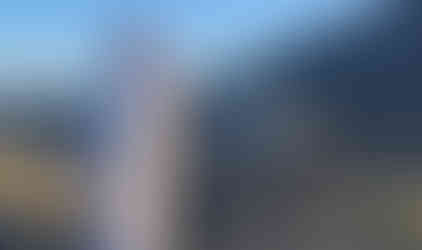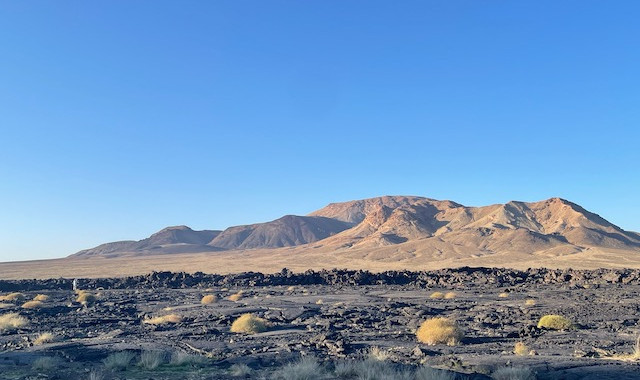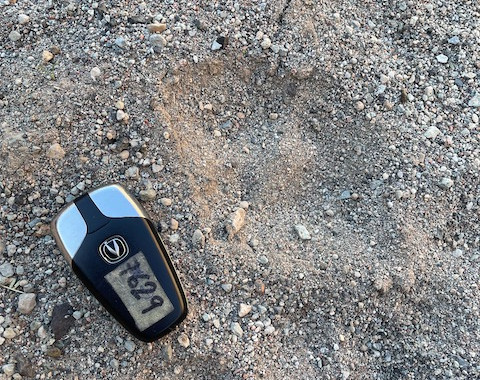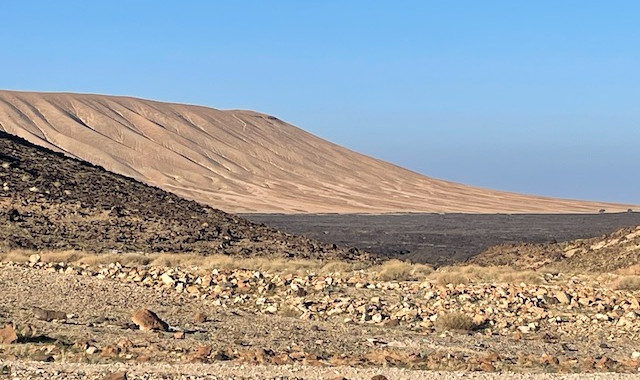The November 2024 Custom Bird Tour with Saudi Birding
- saudibirding
- Dec 10, 2024
- 28 min read
Updated: Jul 28
Tour Dates: November 8 - 22, 2024
Guests: Kristi and Peter
Guide: Gregory Askew
Avian Highlights:
See-see Partridge
Sand Partridge
Harlequin Quail
Arabian Partridge
Chukar
Philby's Partridge
Rameron Pigeon
Red-eyed Dove
White-browed Coucal
Nubian Nightjar
Red-knobbed Coot
Terek Sandpiper
Broad-billed Sandpiper
Small Buttonquail
Crab-Plover
White-eyed Gull
Lesser Flamingo
Black Stork
Yellow-billed Egret
Goliath Heron
Hamerkop
Pink-backed Pelican
Oriental Honey-Buzzard
Cinereous Vulture
Eurasian Griffon
Steppe Eagle
Imperial Eagle
Shikra (African)
Arabian Scops-Owl
Arabian Eagle-Owl
Pharaoh Eagle-Owl
Little Owl
Desert Owl
African Grey Hornbill
Arabian Green Bee-eater
Abyssinian Roller
Arabian Woodpecker
Black-crowned Tchagra (Arabian)
Asir Magpie
Greater Hoopoe-Lark
Singing Bushlark
Rufous-capped Lark
Arabian Lark
Common Reed Warbler (Mangrove)
Brown Woodland Warbler
Scrub Warbler (inquieta and buryi)
Yemen Warbler
Arabian Warbler
Menetries's Warbler
Sardinian Warbler
Abyssinian White-eye
Arabian Babbler
Tristram's Starling
Yemen Thrush
Black Scrub-Robin
Little Rock-Thrush
African Stonechat
Buff-breasted Wheatear
Hooded Wheatear
Arabian Wheatear
Kurdish Wheatear
Shining Sunbird (Arabian)
Arabian Waxbill
Spanish Sparrow
Arabian Golden Sparrow
Sinai Rosefinch
Trumpeter Finch
Desert Finch
Arabian (Olive-Rumped) Serin
Yemen Serin
Yemen Linnet
Syrian Serin
Cinnamon-breasted Bunting
Striolated Bunting
Other Wildlife Highlights:
Hamadryas Baboon
Sundevall's Jird
Desert Hedgehog
Egyptian Fruit Bat
Spinner Dolphin
Common Genet
Arabian Wolf (tracks only)
Arabian Gazelle
Arabian Sand Gazelle
Egyptian Rock Agama
Yemen Rock Agama
Anderson's Rock Agama
Rock Semaphore Gecko
Arabian Skittering Frog
Well, it's been a busy fall so far. I'm recently back from guiding another private tour, nearly on the heels of the tour I did with Jonathan Franzen back in October, and am now preparing for my next tour in February. As pressed for time as ever, I had to make time to write up a trip report while the experience was still fresh, and what a trip it was! My clients were a pair of retired geologists with a fondness for Arab culture who eschew the breathless pace and narrow focus of a typical bird tour. They requested a custom itinerary that catered to their other interests and not just birds. What I proposed was a fifteen-day tour that would ultimately entail over 3500 kilometers of driving and cover some of the most ecologically, geologically, and archaeologically interesting regions of the Kingdom. We spent the first eight days in the southwest, starting in Abha, before flying to Tabuk for seven days in the northwest. This is the first such tour I've offered and, to be honest, I couldn't be more thrilled at how well it went. Our birding efforts netted a total of 189 species, over 60 of which were lifers for Kristi and Peter.
Day 1—Abha
The tour kicked off with a visit to Raidah Preserve in Abha. The main target here was Arabian Partridge and that morning we got the best views I've had of this shy endemic over several recent visits. We picked up a few other endemics here as well. Our first stop as we descended proved quite active with our first encounters with Yemen Thrush, Yemen Warbler, and Yemen Linnet among other passerines of the juniper zone.
Further down we picked up a couple of Rameron Pigeon, not nearly the numbers seen in October but this species has proven reliable throughout the year. Upon reaching the elevation dominated by succulents—the endemic Yemen Aloe Tree and invasive Prickly Pear Cactus—we found our first Arabian Sunbird and White-browed Coucal of the morning. Also in this zone we found the first of two Arabian Black-crowned Tchagra seen on the trip.

At the wadi bottom, we were treated to a veritable parade of African Gray Hornbill as they made their way down the wadi in twos and threes, stopping briefly to feed in a fruiting tree nearby. Arabian Green Bee-eater was common here as was Blackstart, one of which perched closeby, allowing a nice photo-op for Peter and a recording for me.
Taking a break on our return back to the top of the escarpment, we found an active group of passerines drawn to water pooling on the side of the road. We got out to investigate and soon had our first Arabian Woodpecker of the tour. Not a bad way to kick things off.
A slower pace meant not turning down an invitation to tea by one of the preserve's rangers. It was nice to see a gallery of the birds found in the region as well as a couple of displays on the mammals and birds found in the preserve.

We then headed to Soudah Creek, where we met back up with Jacky Judas. He had joined us for a short time at Raidah earlier in the morning and made it back out after running an errand. Good thing too as it's always a pleasure seeing him. Soudah Creek proved much drier and quieter than during my visit in October. We still managed to find some nice birds with better views of Yemen Thrush and Yemen Linnet, our first Arabian Serins, and, of course, one of the resident African Stonechats. Arguably the best bird of the day was found here as well—honing in on a calling Arabian Scops Owl, we located the bird and crawling on hands and knees beneath some thorny tangles managed to position ourselves less than two meters away without disturbing it. The views that followed were staggeringly good.
After saying goodbye to Jacky, we grabbed a lunch of chicken mandy and ate it in a park on our way to Rojal Alma'a Heritage Village, one of the more significant cultural heritage sites in the country. This was my first visit to this over-900-year-old village and the charm of the place can't be overstated. My wife would agree, however, that actual ruins, which can still be found in places around the village, are far more interesting than a lot of what has been restored. The Al-wan Palace, where the museum is located, is striking nonetheless.
Our last stop of the day was to Dhaboo'y Dam near the village of Tabab. On the way we found our first Arabian Wheatear and then at the dam good numbers still of Red-knobbed Coot, sporting their namesake protuberances atop their frontal shields.
Day 2—Tanomah
The next morning we headed out early to make it to Tanomah at sunrise. We got to the spot just as a resident troop of Arabian Babbler were becoming active, along with a cast of highland specialists, including a nearby Asir Magpie.
The sun striking nearby ridgelines was the cue for the morning's prime target—Philby's Partridge. It took some time but eventually we found a calling male a couple hundred meters out. Not ideal at that distance but we enjoyed long scope views of this otherwise flighty partridge.
We drove out to the edge of the escarpment, adding Eurasian Griffon and Alpine Swift along with a couple more magpies. Also on the drive, we stopped at one of my more reliable spots for Buff-breasted Wheatear. A pair were hanging out near the road, sticking close to a low rock wall, which suggested they could be nesting in the area.
This was productive encounter as I finally managed to capture what I believe to be the first-ever recording of the sub-song of Buff-breasted Wheatear. The male was singing so quietly and motionlessly that I didn't realize it at first. Thankfully, though, my recorder was going the whole time.
We made a couple more stops in Tanomah, including a visit to the still inactive griffon colony, before heading back towards Abha. On the way, we called in on another population of Asir Magpie, finding seven birds as well as two nests—large, rounded domes built atop dead junipers. The highlands here were quite dry with far fewer birds than the previous month. This is one of the downsides to visiting in the late fall and winter. During these months, certain target species become harder to find, such as Rufous-capped Lark and Arabian Waxbill. African Pipit, though described in the literature as resident, has been MIA outside of the spring and summer.

Day 3—Habala to Jebel Al Aswad
The morning of our third day we left Abha, heading south towards Habala and our final birding stops in the Asir highlands. On the way we tried for Little Owl at the spot I discovered in October. We got a response from one owl but couldn't locate it. The beauty of this spot was consolation enough however. Granite mounds and boulder piles dot the open landscape, a perfect place for Little Owls. Like the Yemen Aloe Trees on our first day, many of the plants and shrubs here were flowering, including the Arabian subspecies of Desert Rose (Adenium obesum arabicum).
One of the best birds from this spot was an Arabian Great Gray Shrike singing from atop an acacia in gorgeous morning light. I look forward to seeing what Peter's long lens made of the moment. It was a spectacular morning. My recording, however, would have been better if there hadn't been so much noise from the road.
Out at Habala, we had our breakfast by the cliffs and waited and watched for the local flock of Yemen Serin. While we waited, there were a couple of male Eastern Black Redstart to engage us. Given the extent of red on the lower breast and belly, these were presumably the subspecies Phoenicurus ochruros phoenicuroides. I suspect we had two or three other Black Redstart taxa on this tour, including Western Black in the northwest. Please read on and reach out if you can help confirm.
This Rock Semaphore Gecko was perhaps the smallest lizard I've ever seen!
Before long I heard a familiar call and looked up to see the Yemen Serins flying in to the area we typically see them, perching on the barbed wire or dropping to the ground to forage. We tried to creep closer for photographs but they were quite flighty. I did manage to catch a few on the other side of the fence at close range just before they flew and got the recording below.
We packed up at the cliffs and drove to the plateau to look look for Rufous-capped Lark. Even before we could reach my usual spot, we had a flock of 30 or so streaming across the road and settling a short distance away. No stumbling across the rock-strewn plateau this time. We watched them through my scope from the comfort of the roadside.
With that we were on our way to the Jazan region. Taking the long way to Jebel Al Aswad, our next stop, was far more scenic than if we descended the Asir escarpment and approached from the lowlands. The towns and villages along the way held many fine examples of traditional Asiri architecture. At one village, we stopped to check out the ruins of a mud house in the Asiri style. The design feautre that struck me the most was the rows of perfectly aligned slate pieces jutting out of the mud walls. Angled slightly downwards, these have the effect of cascading rainwater away from the exterior mud walls, helping to reduce erosion.
After grabbing lunch to go in Wadi Al Amoud, we continued on to Wadi Lajab, one of the more striking canyon complexes in the country, sections of which are wet yearround. Turns out picnicking at the site was a bad call. Perching ourselves on a wide rock ledge at the base of the canyon, we managed to get half way through our lunch before the baboons showed up. While the females and young eyed our food, they kept their distance, but a large male suddenly appeared from behind Kristi, snagging her bag of food and scaring both Kristi and me. Not fun! Nor was nearly getting attacked by one when I approached a male swiping his paw around under a tarp on the back of a pickup. We were literally face to face for one heart-sinking moment.
Once I stashed the remainder of our food in the rental, we explored what we could in the wadi. The water level was high in most places, preventing us from venturing too far from the parking area. Kristi and Peter explained some of the geologic features in the canyon and we found the endemic Arabian Skittering Frog in some of the larger pools.
Arabian Skittering Frog (Euphlyctis ehrenbergii) at Wadi Lajab
Later, after some down time at the Black Mountain Hotel on Jebel Al Aswad, we headed out for some night birding. We went to the same spot I found Desert Owl with Jon and Charles in October. This time we not only got amazing views of one of the Desert Owls but also had a surprise appearance by a Pharaoh Eagle-Owl. All the while, Arabian Scops-Owls were calling from nearby trees. At one point, we also saw what was likely a Common Genet creeping along the cliff face.
On the way back to the hotel, we watched the pylons and light poles along the road up Jebel Al Aswad for Arabian Eagle-Owl, which I had seen hunting in the area back in 2020. Sure enough I spotted a shape atop one of the pylons as we drove slowly back towards the hotel and there it was, our fourth owl species of the evening.
Day 4—Al Hasher and Fayfa
After such a successful night of owling, I planned a more leisurely departure the next morning. Good thing too—the morning views on Jebel Al Aswad were amazing, especially looking north towards Wadi Lajab and Jebel Al Qahar. After Yemeni breakfast at the local restaurant, we hit the road for Jebel Fayfa.
We made a stop on the Al Hasher Mountain, birding a little in Al Saheef, a quaint village on the northwest flank of the mountain. The views here were stunning and we found the village quite birdy. There was a covey of Arabian Partridge as we arrived as well as the only Little Rock Thrush of the trip, this Afrotropical being largely absent during the winter months. In the heart of the village, Arabian Wheatear were common, with four pairs in a relatively small area. We also found both Yemen Serin hanging out near the local grocers. We got flybys of both Red-eyed Dove and the similarly built Rameron Pigeon as well.
A female Arabian Wheatear and the Arabian subspecies of Long-billed Pipit
Our next stay was in a small city running along the steep upper slopes of Jebel Fayfa. The mountain is located within 10 kilometers of the border with Yemen and from our hotel we could see mountaintops over the border in the Houthi-controlled north. Our time on the mountain was spent exploring the local farms, in which coffee and, more signficantly, qat are grown. Qat is mildly narcotic and is widely used in Yemen. While illegal in Saudi, its cultivation and use in the region are tolerated by the government. What isn't tolerated is its transportation elsewhere in the Kingdom and the many checkpoints in the south are as much about security as they are about nabbing smugglers.
Like many other places in the southwest, Jebel Fayfa has been dealing with the invasive parasitic fly Cochineal (Dactylopius coccus), which arrived from the Americas with prickly pear cactus (Opuntia ficus indicus) centuries before. We were told that this insect, from which the dye carmine was originally produced, has been damaging other crops in the region besides the prickly pear. Having read about the Cochineal in an essay by Charles Hood, I was interested in seeing if what I read was true—that crushing the insect in the white, cocoon-like structure that protects its body as it parasitizes the cactus's pads would produce the bright red substance from which the dye was made. Watch the videos below to see the messy result...
The birding proved fairly quiet on Jebel Fayfa; however, we did have a few interesting encounters, including close views of an adult African Shikra.

Sunrise and sunset can be quite stunning on Jebel Fayfa. At sunset we went out to overlook to take in the scenery. Through later summer and fall though expect an afternoon cloud bank to roll in. The freshness of the air and the contrasts in light, texture, and depth from that vantage are truly exhilarating.
Day 5—Al Aridhah
The next morning we were off to the lowlands of Jazan, heading towards Al Aridhah and Al Sadd Lake.
Google Maps, whose directions were questionable on the best of days, fortuitously sent us via a dirt track through a lowland wadi that proved quite productive. At the village of Al Daqeeqah, we saw several Red-eyed Doves as well as a pair of courting Abyssinian Roller.
Further down the road, dominated by open woodlands nestled between low hills, we found a pair of Arabian Woodpeckers. At 300 meters ASL, this was the lowest elevation at which I found this fun endemic woodpecker. Arabian Sunbird, as well as our first Nile Valley Sunbirds, were also seen here.
At Al Sadd, we learned a little more about the construction happening on the east side of the north lake. They're running a floating pipeline from one side to the other. The ongoing work has been a major disturbance, but we were still able to find some interesting birds, including a lone Lesser Flamingo, the only other place besides the Jazan Wastewater Treatment Plant where I've seen this rare visitor, and Pink-backed Pelicans.
On our way to the overlook at the south lake, I spotted three stork circling in the distance. These turned out to be Black Stork, a lifer I had long been hoping for. Unfortunately, I couldn't get closer views but we watched carefully as they circled to ensure they didn't have the white lower backs that would've made them Abdim's Stork instead. All dark backs—tick!
At the overlook, we found an immature Red-eyed Dove in the spot where I'd seen one perched a few other times in the past. Then scoping at the south lake we located three presumed Yellow-billed Egret, including one that was fairly close. This bird, like the others I've seen here, can't be separated from Medium Egret in any obvious way, but closer proximity to East African populations suggests Yellow-billed the likely "intermediate egret" in southwest Saudi.
From the lake we drove to the village of Gamri to try for Arabian Golden Sparrow. As during previous tours, our first attempt was a fail; however, we did find a couple of Siberian Stonechats of the Caspian race (S. m. hemprichii) as well as a nice male feldegg Yellow Wagtail.
Near sunset we returned to the lake, after a rest at our hotel in Abu Arish. Arriving before sunset meant catching a lot of birds returning to roosts, one in particular was an endemic that we had missed during our time in the highlands. Shortly after parking and starting down a path towards the lakeshore, I spotted them—three Arabian Waxbill perched atop an acacia. With that, we saw all but one of the Arabian endemics. Surely Arabian Grosbeak can be found in other places in Saudi's southwest but in the past decade they've only been seen from a limited stretch of the Sarawat Range, from Taif down to Al Bahah. We would find around 20 more waxbills coming in to roost near the inflow.
After dark we switched into nightjar mode. We prowled all the same spots as in October but couldn't find any Plain Nightjar, which were presumably migrants on the move when we saw them last. We did, however, see several Nubian Nightjar, one of which was with a chick.
Day 6—The Sabya Area
The next morning we went out to the pivot fields south of Sabya. All of the expected species were present, but seeing them was another matter. We put in almost two hours of effort and came away with wet feet and heard-only Harlequin Quail and Small Buttonquail.
We then headed north to a village where golden sparrows have been seen several times in the past couple years. Within a few minutes of arriving we got on a small flock of Arabian Golden Sparrows, one of which was still a rather brightly colored male. The first encounter was brief, so we drove around until we found possibly the same male at one of the main drinking spots in the village. While we've learned a lot more about their movements, it's still hard to predict where these nomadic breeders/feeders will turn up.
A brief stop at the Either Mangroves proved fruitless owing to an extreme high tide. I'd never seen the tid so high before and the only way to have gotten close enough to the mangroves to try for the white-eyes would have been wading through calf-deep water.
We wrapped up a day of lowland birding at the farms in Sabya. No Hypocolius, possibly still a little early, but we did see Oriental Honey-buzzard and saw a large nightjar, possibly Egyptian, but couldn't relocate it to confirm. Besides a couple bat species as well, we found a Desert Hedgehog that was determined to give us the slip. Would've been fun to get photos of the little cutie.
Day 7—The Farasan Islands
We spent our second-to-last day in the southwest out on the Farasan Islands. Our boat captain, Abu Ibrahim, met us at the ferry terminal and drove us the short distance to the coast guard office to undergo the security procedure. Once done, we were ready to depart on our offshore excursion. The route Abu Ibrahim planned for us had us weaving through a small island chain near the ferry terminal on our way out to the smaller offshore islands where we had seen Sooty Falcon the previous month. Here we saw Brown Boobies with nearly fledged chicks and our first of many White-eyed Gulls. Small Sternula terns here turned out to be Little Terns. The apparent absence of Saunders's Terns during this visitmakes me think that, like in the Persian Gulf, summer-breeding terns like Saunders's and White-cheeked, which we also didn't see, leave the region during the winter months.

Out at the falcon nesting site, none were to be found. Elsewhere they were reported to have left a couple weeks prior, so the window for finding falcons on site likely closes around mid-October.
No mind, we had other fun encounters ahead of us to make up for missing out on the falcons. On our crossing towards the moangrove forest, Abu Ibrahim spotted a feeding flock of Lesser Crested Terns and Brown Booby and sagely steered us in that direction, suspecting, it turned out, that dolphins would be present as well. Sure enough, when we reached the spot, we were soon joined by a small pod of Spinner Dolphins, weaving to and fro ahead of the bow.
At the mangroves, we found one of the Goliath Herons attending the nest we discovered in October. Drifing in close enough to peer inside, we were able to confirm the presence of eggs. Hopefully the pair will raise a succesful brood and we'll be greeting the young birds on my next visit in April 2025. The Pink-backed Pelicans were well on their way to rearing healthy chicks at the breeding colony here. We even got to witness one of the chicks feeding from its parent's pouch.

Knowing my clients' interest in geology, Abu Ibrahim steered us through a narrow passageway near the mouth of the mangrove lagoon where he was able to show us examples of the fossilized marine life that can be found all over the Farasans.
After we returned to the marina, Abu Ibrahim then took us around the island for a little. We saw a couple of the resident Egyptian Vultures and even some members of the island's herd of Arabian Gazelle. This herd is the largest in the kingdom.
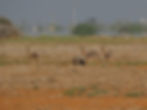
Day 8—Jazan to Tabuk
Our final morning in the southwest, we had just enough time for some coastal birding around Jazan. By the time we headed to the airport for our flight to Tabuk and the start of the northwest leg of the tour, we had added several shorebird species that were new for the trip, including Tibetan and Greater Sand-Plovers, Terek Sandpiper, Broad-billed Sandpiper, and Crab-Plover.
Day 9—Jebel Al Lawz
We planned an early start from the hotel in Tabuk in order to arrive to our first birding stop on Jebel Al Lawz just after sunrise. The road up the mountain was busy with people heading to work around the Trojena site. Part of the larger NEOM project, Trojena will be a resort with planned winter sports facilities built around the summit area of Jebel Al Lawz. Construction works were well under way with a pipeline excavation project running the whole length of the way past the birding sites I had planned to visit. Opposite the area where I had first birded back in December 2020, they had even erected a large and noisy cement factory—not the kind of scene I was hoping to encounter.
Despite all the changes and challenges accessing good birding, we still pretty much found what we came for. Finding our way across the pipeline excavation, we explored a derelict farm near where I had first seen Syrian Serin. On arriving, our attention was first drawn by a couple Western Black Redstart (Phoenicurus ochruros gibraltariensis) active around the old camel pens. This is the presumed subspecies owing to the lack of reddish-orange on the lower flank and belly.
A short distance later and we had our first flock of Syrian Serin. As flighty as ever, they didn't stay long. We explored a little further, down a gulley where I had seen Chukar in 2020, adding our only Northern Wheatear as well as a White-crowned Wheatear, the most common wheatear species of the trip.
We made our way back to the road and up a slope on the opposite side of the road. Here we found the serin flocks again, eventually getting good views of one feeding in Artemisia bushes. The Levantine subspecies of Scrub Warbler was common here as were Fan-tailed Raven and Tristram's Starling.
We then found a nice track that led further from the road and the near incessant sound of construction vehicles. There's a small farm right near the start and within moments of setting off down the track we had our only Chukar of the morning, which scrambled upslope away from us and eventually took flight and rounded a mountain slope out of sight.
In the afternoon, back in Tabuk, we met up with Philip Faure, Senior Wildlife Research Specialist with the King Salamn bin Abdulaziz Royal Preserve, for some late afternoon birding around the farms and plantations east of the city. Philip and I arranged to meet in person only to discover that we had already in fact met down on Jebel Al Aswad in Jazan region back when he worked for Panthera on an Arabian Leopard research project. Philip had become more interested in learning about Saudi birds and was looking forward to joining us. We were hoping for owls at this stop, specifically Barn Owl and Pallid Scops Owl. While we had no luck with either, we did find a small flock of Desert Finch, which was a lifer for Kristi, Peter, and Philip. We also saw many White-eared Bulbuls as well. This species was introduced to the region and can be found throughout the farms here. The native White-spectacled is largely absent away from natural habitats in this region.
Day 10—Wadi Disah to Al Ula
We made an early departure the next morning to make it to Wadi Disah by 7:30. The plan was to hire a guide with a 4x4 to take us deeper into the wadi than we'd otherwise make it on foot. The wadi bottom is quite sandy and often wet in places, so our access would have otherwise been limited. Our driver that morning was Abu Mazen. What he lacked in terms of his English ability, which was everything, he made up for with his voluble personality.
During our tour of Wadi Disah, Abu Mazen not only showed us the incredible collection of petroglyphs, called "naqoosh" (نقوش) in local Arabic, at a bend in the canyon bottom but also a petroglyph display some 20 meters up the rock face that we would have otherwise missed.
Knowing we were birders and specifically looking for Arabian Partridge, he took us to an area at the base of the canyon where we almost immediately connected with the endemic partridge. Arabian Partridge has been expanding its range northward and is believed to have more recently moved into places like Wadi Disah. However, Abu Mazen told me they have been there even since he was a child, some 50 plus years, and he would know because his family had hunted them throughout that time. Could he have been mixing it up with Sand Partridge? Well, possibly, but he showed detailed knowledge of Verreaux's Eagle when we had spoken about the presence of hyrax in the area, accurately describing a black eagle with large white patches in its wings that would hunt the hyrax.
A couple of other endemics occur this far north. Arabian Serin is common around the farms here, their sweet vocalizations often giving their presence away. Arabian Sunbird has also been seen but not by us.
From Wadi Disah, we drove to Al Ula. Google Maps offered two routes and I, of course, opted for the shorter one, not realizing at the time just how poor the condition of the road would be. At one point we were traversing a vast basalt lava flow, with flat or gently rolling debris-strewn terrain spreading out in every direction. Basalt-colored Desert Larks flew up from the roadside; even the feral donkeys here were darker than elsewhere in the country, almost as if they evolved in that habitat. I might have enjoyed the otherworldly scene a little more had the road been less lonely—we hardly saw any other vehicles—and the road surface in better condition. Ultimately, we made it without incident, but it's advisable to carefully preview your route options, particularly in the northwest, and if you anticipate crossing a remote area be sure to travel with enough water as well as a means to deal with a possible puncture. That's a lesson I learned during previous tours, so at least this time I had a portable compressor with me.
After checking in at our hotel in Al Ula, we went back out to begin exploring. We made a visit to Jebel Al Fil (Elephant Rock) and were suddenly confronted with a load of foreign tourists. After over a week of not seeing virtually any, it was a bit of a shock, particularly the influencer-types. The place is so stunning though; I got over it.
From there we explored a nearby sandstone canyon, where we saw our first flock of Sinai Rosefinch, which is a regional specialist only found in northwest Saudi, the Sinai Peninsula, and the southern Levant region.
Day 11—Al Ula
Just past sunrise the next morning, we met up with Ben Lee, the Director of Wildlife and Natural Heritage for the Royal Commission for Al Ula. Ben introduced us to a lovely birding spot just south of town. A colleague of his reported a Persian Wheatear, a winter visitor from largely Iran, Afghanistan, and Pakistan that's more common in the eastern and central parts of Saudi. While we couldn't relocate the wheatear, we did see our first Sand Partridges of the tour. In our search for partridges, we also happened upon petroglyphs featuring strange big-handed figures, similar to the ones we had also seen in Wadi Disah the day before.
We then headed to the Winter Park to catch the bus for our visit to Dadan and Jebel Ikmah. The Lion Tombs of Dadan were wonderfully carved testaments to the skill of these ancient architects; however, nothing compared to tombs and diwan at Hegra in terms of scale. Jebel Ikmah was quite interesting as it features a larger array of petroglyphs and inscriptions than we found at Wadi Disah but the setting was similar—an elevated tier of rock on which the inscribers could create their depictions and, as I suspect, lecture upon them before an audience assembled below. We would visit another very similar setting in the Shara'an Preserve the next morning.
After lunch we made a quick stop at the Harrah viewpoint, driving out a barren extension of the basalt lava field west of Al Ula, and then returned to the Winter Park for our scheduled visit to Hegra, Al Ula's premier archaeological destination.
This was the second time I had visited, but this time around more of the area was open to the public, including the Diwan and Jebel Al Banat. Birding wasn't the object at that point, but it was hard not to notice a handsome male Blue Rock Thrush as it eyed the group of visitors at the Diwan, nor the Egyptian Rock Agama clinging to the rockface a short distance away.
After our Hegra tour, we met up again with Ben Lee for some late afternoon birding in the canyons east of Al Ula. We started at the site of an Egyptian Fruit Bat roost my daughter and I discovered in 2020. Performing some minor spelunking to determine the depth of the cave, I was excited to find the bats were still present.
We then tried for different owl species in the area with Desert Owl responding near one of our stops. Despite multiple stops at promising farms, we could not find Barn Owl.
Day 12—Al Ula to Khaybar
On our last morning in Al Ula, we were picked up before sunrise by Ibrahim, our driver and guide from Pangaea Adventures, the company through which I booked our tour of the Shara'an Nature Preserve. Thanks to Ibrahim's excellent offroading skills, we spent four hours driving through some of the most stunning terrain I've ever seen. The network of canyons at the heart of the reserve is so intricate it almost felt like we'd entered a maze.
Because access to the preserve is regulated, the wildlife viewing was optimal. While we unfortunately missed out on seeing Arabian Oryx and Nubian Ibex, we did see Arabian Gazelle (idmee) and Arabian Sand Gazelle (reem). All of the ungulates here are part of a reintroduction program aimed at rewilding the desert. Camels and livestock were removed from within the perimeter, so this was some of the healthiest desert I've explored.
As for the birds, we found good numbers of Sinai Rosefinch and Desert Lark, with two races of the latter—Ammomanes deserti samharensis around the red sandstone canyons and jebels and A. d. isabellina in the more open sandy areas.
We also saw Mourning Wheatear in the preserve. Arabian Wheatear was formerly considered a subspecies of Mourning Wheatear on account of morphological similarities. These similarities have led to misidentifications in the southwest, particularly during the winter when Oenanthe lugens persica, a winter visitor from Iraq and Iran, is present. The birds in the northwest are resident yearround and belog to the nominate subspecies Oenanthe lugens lugens. Arabian Wheatear doesn't occur this far north so there should be no chance of confusion.
One of the other highlights of our visit to Shara'an was viewing another stunning gallery of petroglyphs and inscriptions. These featured predators that roamed the land during that time, including the Asiatic Lion.
In the early afternoon, we drove south from Al Ula towards the historic city of Khaybar. On the way we stopped to investigate two mustatils (مستطيلات) near the village of Al Mangi. The mustatils are rectangular shaped structures of stacked basalt rock that are found across the vast lava fields of Saudi's Al Madinah region. Mustatil is the Arabic word for "rectangle". These are said to be around 7000 years old and are suspected to have been associated with an ancient cattle cult. I'd never heard of them before reaching interesting archaeological sites for my clients. Well worth the stop, especially since they're still accessible to the public.
While visiting the mustatils, we saw yet another race of Desert Lark, this time A. d. saturata, which is a dark form associated with the basalt lava fields in western Arabia.
Before getting to our hotel in Al Thamad, we attempted to see the historic Khaybar Fort, which the army of the Prophet conquered the Jewish community established there. The ruins of a village surround the wadi from which the fort rises up like a ship above a river. Not sure the age of these ruins but when we pulled up we were quickly approached by security. The whole area is currently off limits for further development.
Day 13—Khaybar to Hail
The next morning we drove from Al Thamad to the turnoff for the Khaybar Volcanoes. We followed Salem, our driver and guide, in his old Toyota Land Cruiser, the wheels we'd need to get out to Jebel Al Bayda, a rare silica volcano that contrasts strikingly with Jebel Al Qader, a basalt volcano, and its dark lava field extending between the two. It turned out to be a phenomenal excursion and not just for the volcanoes.
The birding was surprisingly good on the journey out to the volcanoes. We flushed a couple of large coveys of Sand Partridge and lucked upon a Little Owl out hunting, just when I thought our luck with owls had run out.
At one stop on the way out, we saw four Eurasian Hoopoe and I spotted a nice male Kurdish Wheatear that I unfortunately couldn't relocate for Kristi.
There were also numerous Desert Lark around the edge of the Jebel Al Qader's lava field, looking intermediate between A. d. samharensis and A. d. saturata.
Near the base of Jebel Al Bayda we found Trumpeter Finch, European Stonechat, and our third race of Black Redstart. Black extending down the breast to the lower belly followed by red down to the vent should make this the nominate subspecies Phoenicurus ochruros ochruros.
It was a fantastic morning thanks to Salem. Like our driver and guide at Wadi Disah, Salem proved to have a lot of knowledge about the local plants and animals. He showed us a shrub whose leaves were used to freshen tea, almost like wild menthol, as well as an edible leafy green growing from the stony ground that tastes like arugula. He also took us to a drinking spot near the white volcano where we found wolf tracks. It was clear from these and tracks seen elswhere that wolves are fairly common out in this remote area. Salem also had knowledge about less common birds. I showed him a picture of Lichtenstein's Sandgrouse and he correctly stated that they come to drink at the larger pools in more open terrain after sunset. I was impressed.
Back at the main road we headed east towards Hail, our next stop. After about 10 miles the tarmac came to an end and we were forced to continue on a really rough dirt track in the middle of nowhere until we finally reached a town. Thanks, Google Maps! Again we made it but not without spiking my anxiety!
East of Al Hait we stopped to check out some of the many mysterious keyhole-shaped structures in the area. Like the mustatils, these were constructed by stacking basaltic rock. The keyholes are believed to be around 7000 years old and were likely funerary in purpose (i.e. burial mounds). I was quite intrigued when I first learned of their existence and was thrilled to offer my clients a chance to see some in person.
Before reaching Hail, where we'd stay the night, we crossed a wide stretch of open desert. My lark radar was picking up strong signals, so we kept a close eye on the roadsides for any bird activity. Here we got our first Desert Wheatear. Further down the road I spotted a Greater Hoopoe-Lark fly up from beside the road followed by a smaller lark, which I watched fly off into some very promising habitat.
This was flat sand-gravel desert, firm enough to drive on, with shallow vegetated washes running across—perfect Arabian Lark habitat. Sure enough we drove along the wash featured in the photo and within in a few minutes found an Arabian Lark, which we enjoyed good views of from the car before it flew off. We also found our Greater Hoopoe-Lark as well as three more Desert Wheatears.

Day 14—Hail to Sakaka
After a night in Hail, we hit the road for Jubbah, hoping to get access to the archaeological site there. When we got there, we found that they didn't open until 9:00 AM. Too long to wait, so we began our journey across the Great Nafud Desert towards the Al Jawf region. Not long after entering the desert proper I noticed a few large shapes along the crest of a large dune just off the road. They turned out be part of a larger congregation of vultures and eagles. The jaw-drop was realizing that the three biggest, darkest birds were in fact Cinereous Vultures—Saudi tick! Along with the Cinereous, there were also Steppe and Imperial Eagles and one Eurasian Griffon. I was an exciting stop indeed.
We continued on towards Sakaka, stopping in Dumat Al Jandal for lunch. We checked out the Marid Castle and then drove towards the lake. At a marshy area near the lake we found a few shorebirds and waders, including three White-tailed Lapwings.
Before checking in to our hotel in Sakaka, we made a visit to the Rajajil Columns, groups of carved sandstone columns that archaeologists believe are around 6000 years old. There's a very well designed and well staffed visitors center at the site.
After checking in we were picked up by my friend Nader Fahad Al Shammari, who generously offered to take us birding during our last two days of the tour. First, we visited the farm of Ahmed Ali, another local birder who discovered Pallid Scops Owl breeding at his farm. Despite a thorough search of the farm before and after sunset, we couldn't find any. The owls are resident, so hopefully we'll turn them up in February.
Day 15—Sakaka
The final day of the tour arrived and we headed out early to get to our first birding spot by sunrise. Nader took us out to a cluster of low mountains where he had recently seen See-see Partridge, a species that was only discovered occuring in Saudi within the past ten years. It took some time but eventually we hit the jackpot. We found a total of nine See-see Partridges in three different locations around the mountains, with a small covey so close that we watched them from the car at around three meters. That was our fifth partridge species, the most recorded in a single trip.
And with that our fifteen-day Saudi Birding epic came to an end. It was time to start our journey home. Yet there was one more observation to be made. At the Al Jawf Airport, I realized why the House Sparrows (Passer domesticus) struck me as odd—I suspect they're a different subspecies from the dominant Indian House Sparrow (P. d. indicus), which ranges across Saudi. The 11 recognized subspecies of House Sparrow are divided into two groups—the domesticus group ("gray-cheeked") and the indicus group ("white-cheeked"). Indian House Sparrow belongs to the white-cheeked group and are generally paler above and brighter below. The sparrows I noticed at the airport had a darker russet color in the upperparts, grayer cheek patches, and grayer underparts, particularly the flanks. I believe these are Passer domesticus biblicus, which is said to range from southeastern Turkiye through the Levant to northwestern Iran. Anyway, I plan on paying a little more attention to Saudi's House Sparrows on my next visit in February.
Time to sign off. Hope you enjoyed my latest trip report. Be sure to reach out if you're considering booking a group tour with Saudi Birding or if you might be interested in a personally guided custom tour like the two I led this past fall.
Good birding, y'all!
Interested in going birding with Saudi Birding? Click HERE to explore expert-guided bird tours in Saudi Arabia and elsewhere around the Middle East. We also offer custom tours tailored to your interests and preferred pace, combining targeted birding with other experiences tailored to your personal interests and preferences.

